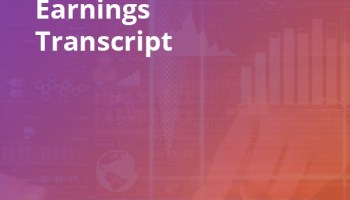Seeking Alpha and Morningstar are two of the bigger names among the legions of sites that provide data, charts, and analysis for investors looking to build and better their portfolios. Sure, some services have more impressive charting tools or cover more types of securities or use AI to find trading opportunities, but there’s a very good reason why Morningstar and Seeking Alpha keep finding their way to best of lists all around the net.
To the untrained eye, Seeking Alpha and Morningstar look like they do a lot of the same things. Both have tons of information and research available, both are pretty big names in the industry, and both cover a lot of the same assets and securities. They seem pretty similar, but are they? Surely one has more going for it than the other, right? And more to the point, which one’s better?
Free Versions
Seeking Alpha
Seeking Alpha has a lot of the same stuff you’ll see on sites like Yahoo! Finance or any number of different sites that provide information on stocks and ETFs. They have real-time updates on stock prices and market performance, some charting functions with historical data and technical indicators, and some basic portfolio management features.
Stock price updates and basic charting are great, but they’re just the tip of Seeking Alpha’s iceberg. Their real value comes in the form of the tens of thousands of analyst reports and opinions sourced from their contributors. Thousands of analysts, traders, investors, and other financial professionals share their insights and expertise in the form of articles, reports, and comments posted on Seeking Alpha.
There’s been at least one study that showed the value in Seeking Alpha’s content. The study analyzed over 100,000 articles and commentaries between 2005 and 2012 to measure their accuracy. To everyone’s surprise (except Seeking Alpha, presumably), the analyzed materials managed to predict both stock prices and earnings surprises over time periods from one month to three years.
Now, things may have changed since that study, but there’s still every reason to believe that Seeking Alpha’s contributors know what they’re talking about.
Morningstar
Morningstar also has a lot of the same basic financial data and charting capabilities that you’ll see on a number of different sites. You’ll only spot the big differences if you start clicking around in the news feed. Where most sites aggregate links to actual publications, the vast majority of what you see on Morningstar was produced in-house by their ultra-qualified staff, much like what you’d see on Seeking Alpha.
Since its inception in 1984, Morningstar has made a real name for itself as one of the best sources of research and analysis on everything from stocks to bonds to mutual funds and more. Morningstar’s team cranks out some of the most thorough, most well-researched reports that you can find on the web. They’re so good, in fact, that many paid subscription services offer access to Morningstar reports as one of their perks. That alone speaks volumes.
Morningstar’s rigorous quantitative analysis models have earned it a rare position in the business. Its commentary, reporting, and ratings are influential enough that they can practically make or break the funds in question. Good reviews are posted and paraded around by fund managers, but bad reviews can lead to major shakeups in the funds’ personnel and asset mix.
What They Have in Common (Free Versions)
Seeking Alpha and Morningstar have a lot in common. They both have news feeds and real-time market updates, for instance, and both have basic charting functionality for markets and individual stocks. They both let you use a limited number of technical indicators to measure against stock prices, they both let you delve into stocks’ surface level fundamental data, and they both let you track the stocks or assets you’re looking at.
Both free sites have limited portfolio management capabilities—basically just letting you build and watch over portfolios with some simple analysis features—and both will give you access to a small subsection of the analysis and/or reports that you’d otherwise have to pay for. Really, they’re quite similar if you just stick to the surface level and don’t subscribe to their paid tiers.
Finally, both sites have a lot of free content written by staffers and/or contributors that you can access right from their front pages. Both sites do a surprisingly good job of keeping abreast of the most recent news, and it can be fun to see how the two sites’ takes differ on any given issue or event.
How They Differ (Free Versions)
The biggest differences between the sites’ free versions is a matter of scope.
Seeking Alpha primarily deals with stocks and ETFs. They have a bit of analysis on bonds as well (really just a small collection of articles), but stocks and ETFs are their bread and butter.
Morningstar’s purview is a bit more expansive. They cover stocks and ETFs, of course, but they also have significant portions of their operation devoted to researching and reporting on mutual funds and bonds as well.
Paid Versions
Seeking Alpha
Seeking Alpha has three membership tiers: Basic (free), Premium, and Pro. The prices and benefits are taken straight from their subscription page:
Premium: $4.59/first 30 days, $239/year after trial
- Access to premium content
- Over 1 million investing ideas and contributor analyses
- Earnings call transcripts and recordings for thousands of stocks
- Seeking Alpha author ratings
- Contributor ratings on a scale from ‘very bullish’ to ‘very bearish’
- Seeking Alpha author performance
- Tracking how well any given author’s performed
- Stock quant ratings
- Quantitative ratings on stock’s growth, value, profitability, etc vs industry peers
- Stock dividend grades
- Data visualizations
- Peer comparisons
- Ten years of downloadable financial statements
Pro: $499/year
- Top ideas
- Exclusive hand-picked investment ideas
- PRO content and newsletters
- Exclusive alerts with potentially actionable investment ideas
- Short ideas portal
- Ideas for shorting stocks
- Idea screener/filter
- Search for ideas by theme, industry, company size, and other parameters
- VIP customer service
Morningstar
Morningstar has two tiers: Free and Morningstar Investor.
Morningstar Investor: $34.95/month or $249 annually
- Access to premium content
- Read reports by over 150 independent Morningstar analysts
- In-depth ratings
- Professional ratings on securities, managers, ESG, prospects, and more
- All backed by transparent methodology
- Powerful investment screener
- Lets you screen for securities by filtering based on a wide range of metrics
- Portfolio X-Ray
- Evaluates your portfolio by a number of factors including asset allocation, sector weightings, fees and expenses, stats, and so on
- Personalized content, insights, and analysis based on your assets and watchlist
- Account integration
- Connect all accounts to Morningstar for centralized asset monitoring
What They Have in Common (Paid Versions)
Morningstar and Seeking Alpha’s paid versions have a few things in common, or at least common-adjacent.
The primary similarity between the two is that much of their respective value propositions come in the form of premium reports, commentary, and analyses from their analysts/contributors. You’ll find all kinds of insightful content on both sites, as well as things like ratings, newsletters, email alerts, and watchlists.
How They Differ (Paid Versions)
You can see the obvious differences between the two sites’ paid services in the lists above. Seeking Alpha doesn’t have the same robust portfolio management or analysis features as Morningstar, for example, and Morningstar doesn’t have the kind of data visualizations or ten years of historical financial statements on file.
The most profound differences are a little less obvious. Seeking Alpha and Morningstar both produce their own analyses and reports, but they’re produced in a different way. Seeking Alpha’s content is produced by contributors who may or may not be paid, while Morningstar’s reports are produced by a smaller roster of hand-picked analysts.
In theory Seeking Alpha’s reliance on crowdsourced contributions should mean it’s less reliable than Morningstar, but it’s cleverly built a couple safeguards into the process to mitigate the risk. The fact that readers can track the individual authors’ performance and give them ratings does a lot to filter out the duds. Morningstar’s hand-picked group obviates the need for such filtration, but they also can’t put out the same sheer volume of analyses that Seeking Alpha does.
Conclusion
Seeking Alpha and Morningstar are two of the biggest players in the investment research game. Morningstar is more traditional, with a staff of qualified analysts pumping out financial journalism and research in an orderly fashion. Seeking Alpha and its crowdsourced model does things a bit differently—and obviously more chaotically—but its best contributors are every bit as skilled as Morningstar’s staff.
You can’t really go wrong by subscribing to either one of the two sites, it’s just a matter of taste.
















